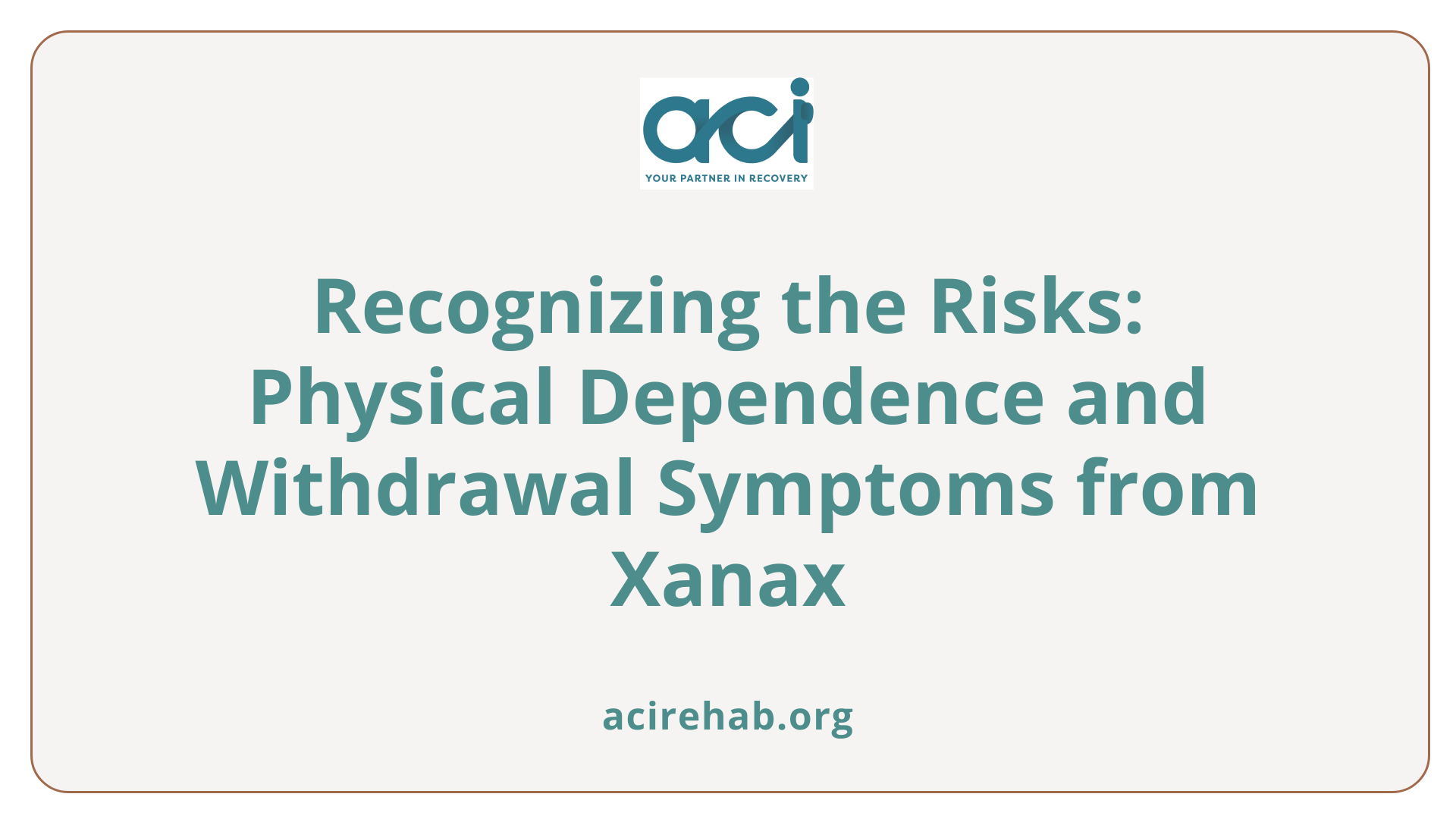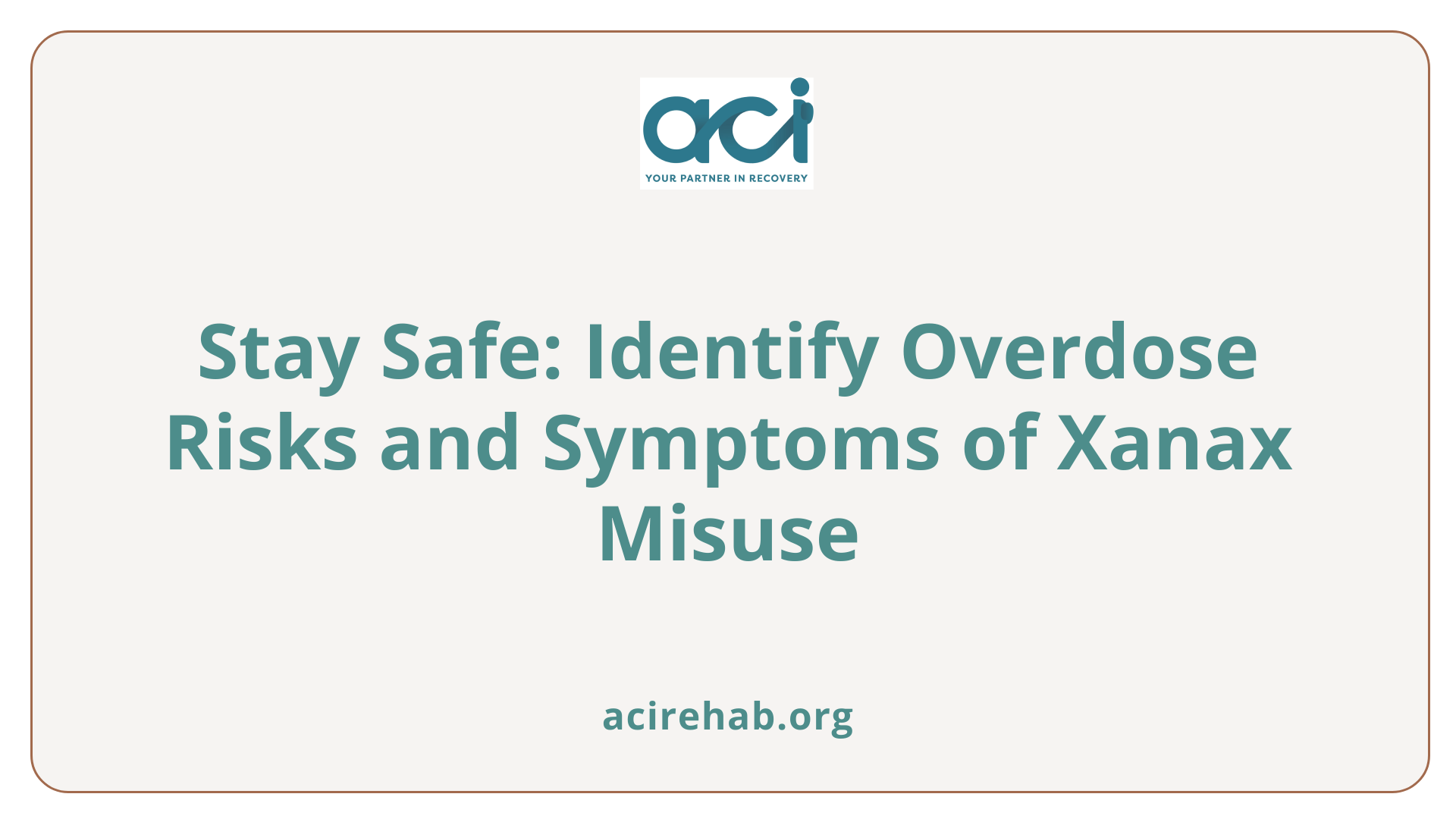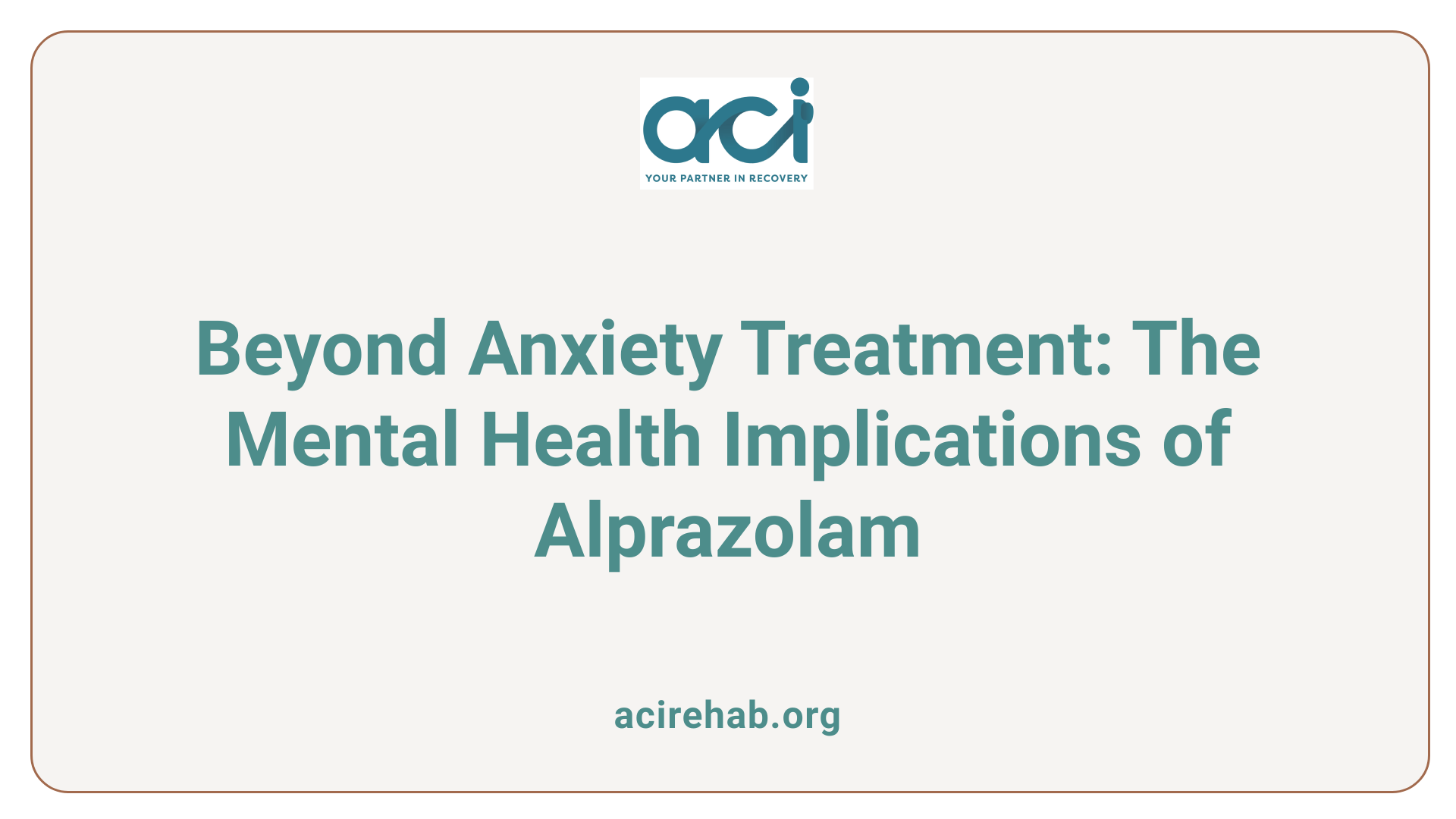Introduction
As a commonly prescribed medication for anxiety and panic disorders, Xanax (alprazolam) is used by millions around the world. However, while it offers temporary relief and comfort to many, it is crucial to understand the potential side effects associated with its use. Xanax can impact the body in various ways, ranging from mild discomfort to severe health risks, exacerbated by both short-term and long-term use. We delve into four primary side effects of Xanax to provide a comprehensive understanding of its impact on your physical and mental health.
Key Facts on Xanax and Its Effects
- Xanax (alprazolam) enhances GABA action, slowing brain activity for calmness.
- Drowsiness is the most common side effect, affecting daily tasks like driving.
- Long-term use may cause cognitive impairment and increase the risk of dementia.
- Abrupt cessation of Xanax leads to severe withdrawal symptoms, including seizures.
- Mixing Xanax with CNS depressants heightens overdose risks, potentially fatal.
- 40% of users may develop physical dependence within a few months of use.
- Doses may need escalation due to tolerance, leading to hazardous usage patterns.
- Overdose symptoms include slurred speech, confusion, and impaired breathing.
- Gradual tapering of the medication is crucial to reduce withdrawal effects and ensure safety.
- Regular medical evaluations are necessary to monitor for cognitive decline and dependence.
1. Drowsiness and Cognitive Impairment

How does Xanax affect the body?
Xanax (alprazolam) affects the body primarily by enhancing the action of Gamma-Aminobutyric Acid (GABA), a neurotransmitter that slows down brain activity. This mechanism promotes a sense of calm and relaxation, making Xanax an effective treatment for conditions like generalized anxiety disorder and panic disorders. However, its potent sedative properties introduce a number of side effects that can impact daily functioning and quality of life.
Common Sedative Effects of Xanax
The most frequently reported adverse effect of Xanax is sedation. Many users experience drowsiness that can interfere with their ability to perform tasks that require full attention, such as driving or operating machinery. Below are some common side effects:
| Side Effects | Description | Additional Notes |
|---|---|---|
| Drowsiness | Increases the risk of accidents and injuries. | May impair daily activities considerably. |
| Dizziness | A sensation of spinning or losing balance. | Can lead to falls, especially in older adults. |
| Cognitive Impairment | Problems with memory and concentration. | May result in long-term cognitive decline. |
| Light-headedness | A feeling of faintness or weakness. | Can exacerbate feelings of confusion in users. |
| Sleepiness | A strong urge to sleep throughout the day. | Affects daily schedules and responsibilities. |
| Impaired Coordination | Difficulties with motor skills and maintaining balance. | Heightens risk in physical activities. |
Impact on Daily Activities
Due to these sedating effects, patients taking Xanax often need to adjust their daily activities. Drowsiness and impaired coordination may necessitate avoiding commitments that require alertness. For individuals with active lifestyles or responsibility for child care, these effects can be significantly disruptive.
Many patients report difficulty concentrating, leading to challenges at work or in academic settings. The cognitive impairment associated with prolonged use can result in diminished work performance and increased risks in safety-sensitive jobs. Memory problems and confusion can create social strain, leading to withdrawal from social situations due to the anxiety induced by their impairments.
Long-Term Considerations
As tolerance develops, many users require higher doses to achieve the desired calming effects. However, increasing doses can exacerbate side effects, compounding issues related to cognitive function. Notably, long-term users are at a higher risk for developing dementia, including Alzheimer’s disease, highlighting the importance of regular medical evaluations.
Additionally, abrupt discontinuation of Xanax can prompt severe withdrawal symptoms, emphasizing the necessity for a medically supervised tapering strategy. This careful management helps mitigate the risks associated with stopping the medication suddenly.
In summary, while Xanax is effective in treating anxiety and panic disorders, it is crucial to be aware of its drowsiness and cognitive impairment effects, which have the potential to significantly affect users’ daily lives.
2. Physical Dependence and Withdrawal Risks

Common and Severe Side Effects of Xanax
Common side effects of Xanax (alprazolam) impact mental alertness and physical coordination. Users may experience:
- Drowsiness and Fatigue: A frequent complaint, leading to hindered daily activities.
- Cognitive Impairments: Includes confusion, trouble concentrating, and memory problems.
- Dizziness and Light-headedness: These effects can significantly increase the risk of falls and accidents.
- Muscle Weakness: This hinders physical activity and can affect motor functions, making it unsafe to drive or operate machinery.
More severe side effects are concerning and can escalate into significant health risks:
- Physical Dependence: A substantial issue where users may find they require higher doses to achieve the same effects.
- Withdrawal Symptoms: Abrupt discontinuation can lead to severe outcomes including:
- Seizures and Psychosis: Serious complications that can be life-threatening.
- Increased Anxiety and Irritability: Emotional disturbances that contribute to further mental health issues.
- Severe Mood Changes: Hallucinations and aggressive behavior might also emerge.
- Overdose Risks: Especially harmful when combined with other CNS depressants, which can lead to respiratory failure and death.
Understanding the Addiction Potential
Xanax is notorious for its addiction potential. Users may develop a dependency in as little as 4 to 8 months, with a significant portion—approximately 40%—experiencing physical dependence. The drug acts on the brain’s reward systems, leading to misuse and increasing tolerance.
- Tolerance Development: Fast tolerance can escalate the risk of overdose. Users often find themselves requiring higher doses to achieve the same tranquil effects.
- Risk of Combining Substances: Mixing Xanax with opioids or alcohol can drastically enhance the sedative effects, increasing the likelihood of severe respiratory depression, coma, or even death.
Withdrawal Symptoms to Anticipate
Withdrawal from Xanax can be severe and unpleasant, highlighting the need for proper management:
- Physical Symptoms: Include muscle cramps, gastrointestinal disturbances like nausea, and insomnia.
- Psychological Symptoms: Heightened anxiety, panic attacks, depression, and sometimes suicidal ideations.
- Severe Withdrawal Effects: Abrupt cessation can result in tremors, seizures, and potential for acute psychosis, which underscores the importance of gradually tapering off the medication under medical supervision.
Monitoring and Support Strategies
Medication management by healthcare professionals is crucial. This process may involve:
- Medical Supervision During Withdrawal: A structured tapering schedule can mitigate withdrawal symptoms, ensuring user safety and comfort.
- Behavioral Therapy: Helps address underlying anxiety and teaches coping mechanisms apart from medication.
In summary, while Xanax is effective for treating anxiety, understanding its potential for addiction and withdrawal symptoms is essential for safe use and recovery. Patients are encouraged to seek medical advice and support when considering discontinuation.
3. Risk of Overdose

Overview of Xanax Overdose Symptoms
Xanax (alprazolam) is a widely prescribed medication known for its effectiveness in treating anxiety and panic disorders. However, misuse or larger-than-prescribed doses can lead to severe consequences, particularly overdose.
Common symptoms of a Xanax overdose include:
- Drowsiness: An individual may experience excessive sleepiness that impacts day-to-day activities.
- Slurred Speech: Difficulty articulating words can occur, indicating impaired cognitive function.
- Slowed Breathing: Respiratory depression is a critical symptom, with shallow or slow breathing that can quickly become life-threatening.
- Impaired Coordination: Users may struggle with balance and motor skills, raising the risk of accidents.
- Confusion: Severe mental fog or confusion can impair decision-making and awareness.
- Loss of Consciousness: In extreme cases, the user may become unresponsive.
Drug Interactions and Safety Considerations
Mixing Xanax with other substances, particularly other central nervous system (CNS) depressants like alcohol or opioids, dramatically increases the risk of overdose. The sedative effects of these substances can synergize, leading to heightened drowsiness, respiratory failure, or coma.
To minimize risks, it’s crucial to adhere to the prescribed dosage. Potential interactions can exacerbate the side effects of Xanax and may lead to serious conditions or even fatalities.
Is it safe to take Xanax multiple times a day?
When prescribed by a doctor, it is generally safe to take Xanax multiple times daily, up to a maximum of four doses as recommended. However, adherence to the prescribed dosage is essential to lower the risks of dependence.
Since Xanax can cause severe complications, especially when used with other CNS depressants, monitoring becomes crucial. If you or someone you know is taking multiple doses and experiencing side effects, consult your healthcare provider immediately to reassess your treatment plan.
In summary, while Xanax can be beneficial, awareness of overdose symptoms and the potential for dangerous drug interactions is vital for safe use.
4. Mental Health Implications

What is the effect of alprazolam 4 mg on the body?
Alprazolam, commonly known as Xanax, is prescribed primarily to treat anxiety and panic disorders. As a benzodiazepine, it functions by calming the nervous system, quickly alleviating anxiety symptoms. The medication is effective, but its use comes with several side effects that can impact mental health significantly.
Common side effects of alprazolam include drowsiness, dizziness, and cognitive impairment. Many patients report difficulties with memory and coordination, which can degrade daily functioning. Serious mental health implications can arise, such as increased depression or anxiety, especially in patients who misuse the drug. Higher doses or long-term use may exacerbate these mood changes, leading to a cycle of dependence.
How does alprazolam contribute to cognitive decline?
Long-term use of alprazolam has been linked to cognitive decline. Users may experience memory problems, confusion, and difficulty concentrating. Research indicates that these cognitive impairments may not be fully reversible even after discontinuing the medication, raising concerns about a potential long-term risk of developing conditions like dementia or Alzheimer’s disease.
Moreover, up to 40% of patients may develop a physical dependence on Xanax within four to eight months of treatment, increasing scripts for higher doses to maintain effectiveness. This often leads to a worsening of symptoms rather than improvement.
Concerns regarding mental health and withdrawal
Abrupt cessation of alprazolam can lead to severe withdrawal symptoms, including heightened anxiety, irritability, and potential suicidal thoughts. These risks underline the necessity for gradual tapering under medical supervision. Withdrawal can also bring on physical symptoms such as nausea and seizures, emphasizing the importance of close monitoring.
In summary, while alprazolam is effective for its intended use, its side effects can significantly impact mental health, leading to deeper issues such as depression and cognitive decline, particularly with long-term usage or misuse. Patients are advised to maintain open communication with their healthcare providers to manage these risks effectively.
Conclusion
Understanding the side effects of Xanax is crucial for anyone considering or currently taking this medication. While it offers therapeutic benefits for anxiety and panic disorders, the potential risks cannot be ignored. From drowsiness and cognitive impairment to severe withdrawal symptoms and overdose risks, patients must be informed and proceed with caution. Always consult with a healthcare professional to ensure Xanax is taken safely and effectively, mitigating the risks while benefitting from its intended effects.
References
- Alprazolam (oral route) – Mayo Clinic
- Xanax: Side Effects, Dangers & Long-Term Impacts
- What does Xanax feel like? Main effects, side effects, and withdrawal
- Short and Long-term Side Effects of Xanax (Alprazolam)
- 4 Xanax Side Effects – Destinations for Teens
- Alprazolam (Xanax): Uses, Side Effects, Interactions … – WebMD
- Alprazolam – StatPearls – NCBI Bookshelf
- Xanax Symptoms and Warning Signs – Alprazolam Abuse
- Xanax Side Effects: Common, Severe, Long Term – Drugs.com

